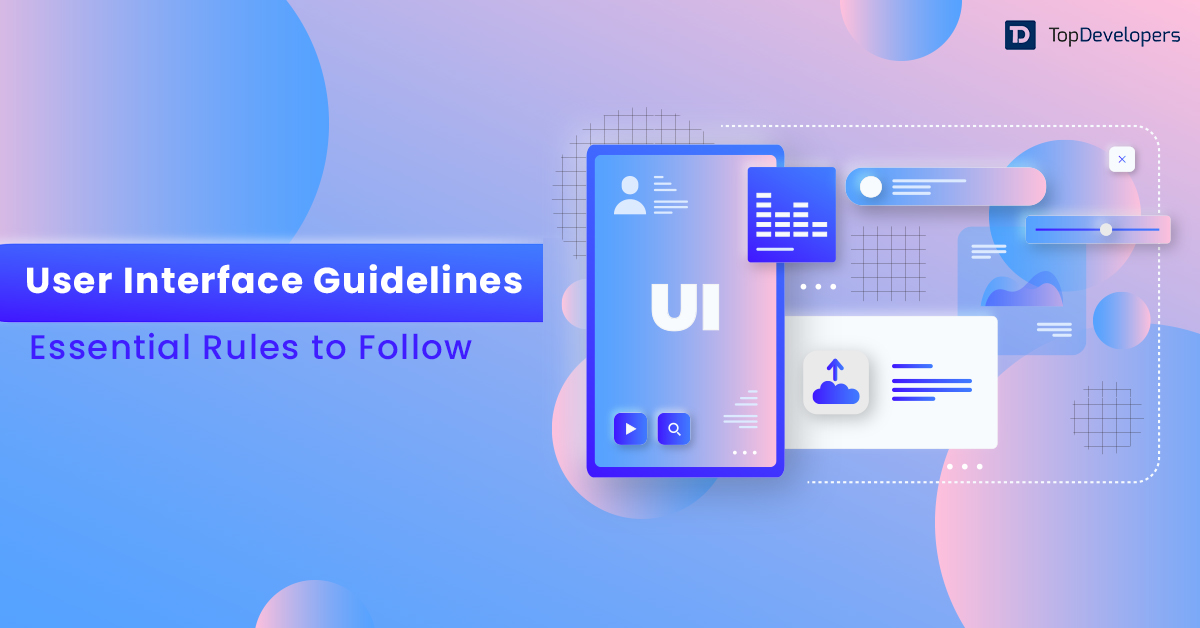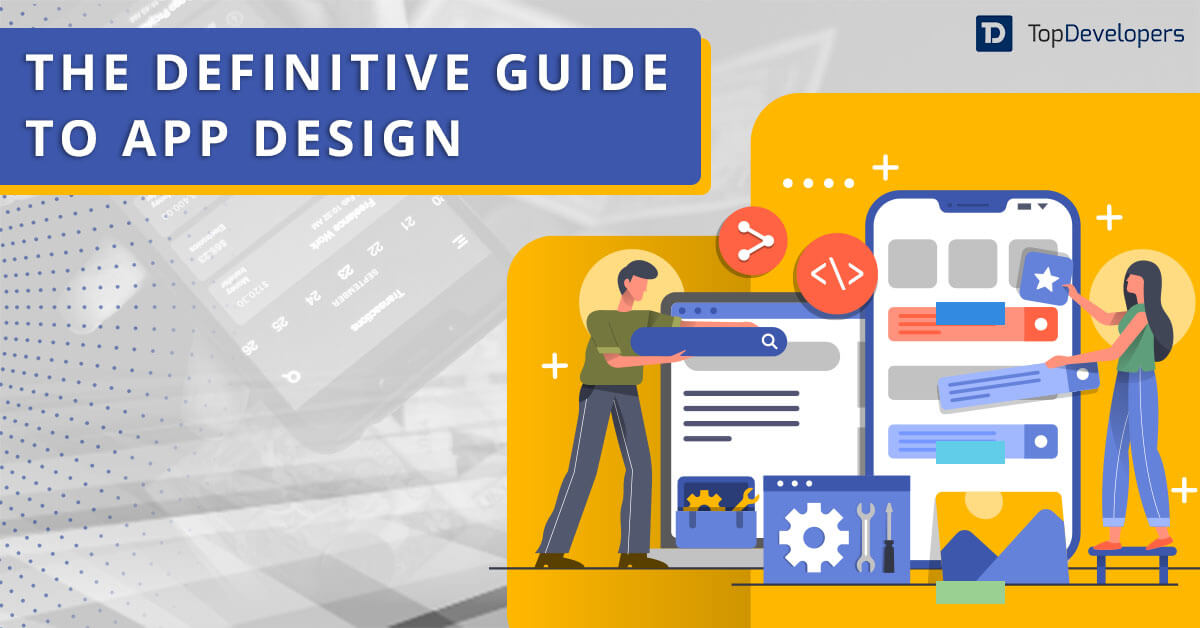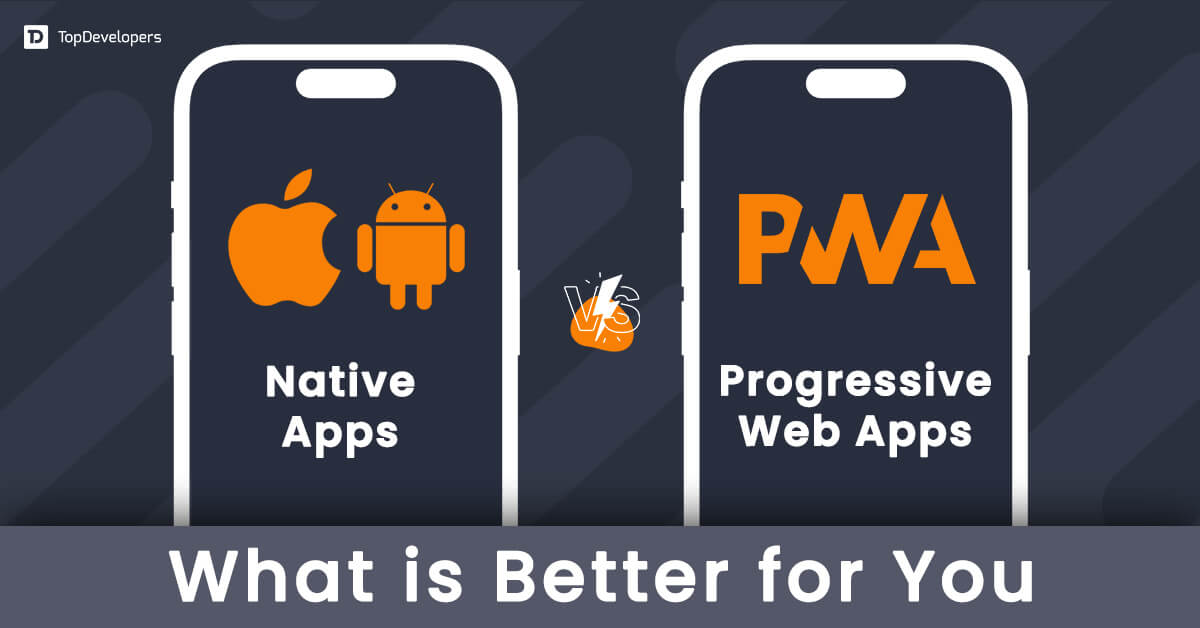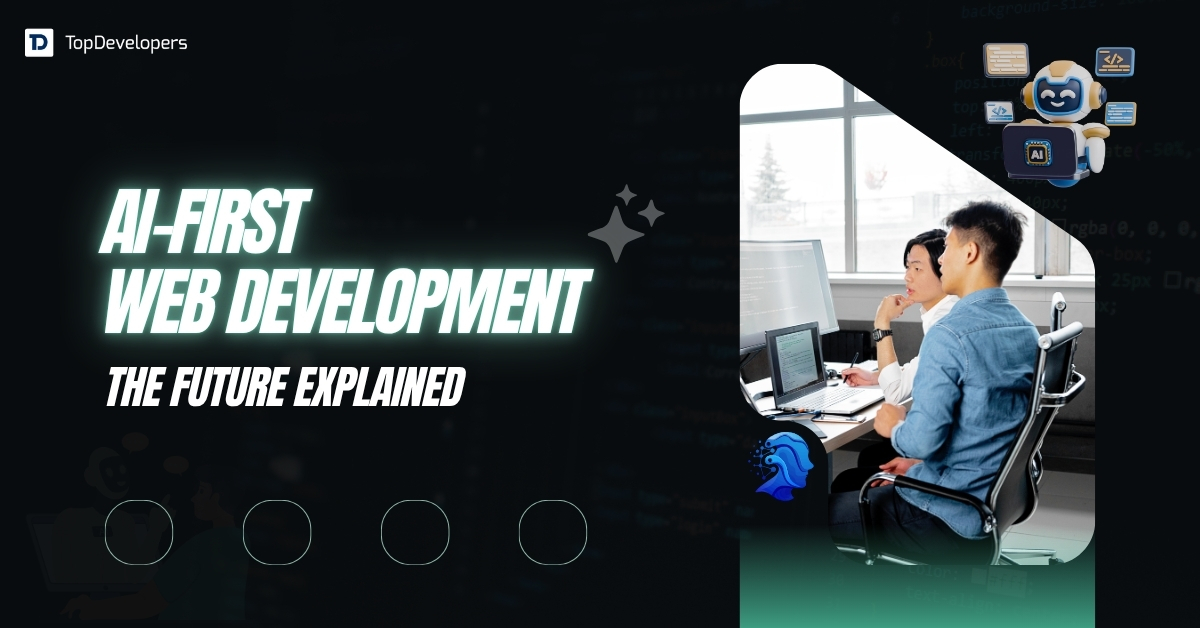
The enormous increase in mobile usage has driven companies to create mobile applications. Although native development and maintenance are costly, challenging to update, need app store approvals, and occasionally have initial loading times that are longer than expected, native app development is the height of mobile devices since it provides the best experiences to consumers with personalization, high performance, and engaging UI/UX.
Progressive Web Apps solve all of these native app development problems most effectively. PWAs load faster, engage users more effectively, increase conversion rates, and significantly improve ROI by a substantial margin, thus surpassing native development. The imaginative corporate executives verify the actual data.
- With PWA, Tinder lowered loading times ranging from 11.9 seconds to 69 seconds.
- Following PWA development, Pinterest’s user engagement
- Treebo saw a threefold increase in retention and a fourfold increase in conversion.
- The top hotel in Western River North experienced a 300% increase in revenue due to the implementation of PWA.
The exceptional findings highlight how well PWAs fit companies. However, typical PWA development errors prevent some companies from achieving the expected outcomes, such as improved engagement, higher conversion rates, and better ROI. Avoiding mistakes such as overcomplicated navigation, inadequate space use, not aiming for high accessibility, and limitless scrolling is crucial.
It calls on companies to give PWA rules and a few pointers more thought. In this article, we will guide you through the best ideas for creating an eye-catching UI/UX design while effectively constructing a user-friendly Progressive Web App.
Table of Contents
PWA Design: Essential Tips for Best UI and UX
Progressive Web Apps (PWAs) combine the best of web and mobile apps, but their success heavily depends on excellent UI/UX design. Here are essential design tips to create outstanding PWAs:
User Experience (UX) Tips
- Match native app expectations by employing familiar movements (swipes, touches, scrolling); therefore, avoid misleading consumers.
- Keep navigation clear and simple; eliminate extraneous steps and clutter to enable a flawless flow.
- Guarantee accessibility for every user; design for mouse, keyboard, and touch with appropriate element distances.
- Comment on user activities (e.g., underline pressed buttons) so interactions seem responsive.
- Test offline compatibility; for a consistent experience, certain sites should function without internet.
- Provide flexible navigation and guarantee every page has its own shared URL.
User Interface (UI) Tips
- Simplify your design by using a few straightforward layouts and steer away from overloading with parts or advertising.
- Boost loading speed and performance using system or basic typefaces.
- Maximize images and apply placeholders to stop layout changes while loading.
- For a known appearance and feel, follow native design rules (Material Design for Android, Human Interface Guidelines for iOS).
- For usability and trust, make sure your app icon complements other programs on consumers’ devices.
- Get a professional, app-like look with configurable splash screens and background colors.
Progressive Web App Design: Best Practices For Great PWA UX-UI
A Progressive Web App’s (PWA) smooth and fulfilling user experience depends on an engaging User Interface (UI) and User Experience (UX). These are some general guidelines that let your PWA UI/UX design produce an intriguing UI/UX:
1. Focus on App-Like Interactions
PWAs should feel like native apps—not traditional websites.
Best Practices:
- Use “display”: “standalone” or “minimal-ui” in the Web App Manifest for a full-screen experience.
- Implement smooth transitions (e.g., page slides, fade-ins) to enhance fluidity.
- Avoid browser elements (e.g., the URL bar) that break immersion.
- Support native-like gestures (swipe to go back, pull-to-refresh).
2. Optimize for Speed & Performance
A fast-loading PWA keeps users engaged and reduces bounce rates.
Best Practices:
- Pre-cache critical assets (HTML, CSS, JS) using service workers.
- Use skeleton screens (instead of spinners) for perceived performance.
- It is recommended to lazy-load non-critical resources such as images and videos.
- Minimize JavaScript bloat (use code-splitting and tree-shaking).
3. Design for Offline & Poor Connectivity
A great PWA works even when offline or on slow networks.
Best Practices:
- Cache essential pages (e.g., homepage, product listings) for offline access.
- Show a custom offline page (instead of the browser’s default error).
- Use background sync to queue actions when connectivity returns.
- Store user input locally (e.g., form drafts) and sync later.
4. Ensure Mobile-First & Responsive Design
PWAs must work flawlessly across all devices.
Best Practices:
- Mobile-first approach—design for small screens first, then scale up.
- Use flexible grids and relative units (rem, vw/vh) for fluid layouts.
- Test on multiple devices (phones, tablets, desktops).
- Ensure touch-friendly targets (minimum 48×48px buttons).
5. Intuitive Navigation & Seamless UX
Users should navigate effortlessly, just like in a native app.
Best Practices:
- Keep navigation consistent (persistent menu or bottom tab bar).
- Use standard icons (e.g., hamburger menu, back button).
- Implement predictable gestures (e.g., swipe actions).
- Provide clear feedback (e.g., button press effects, loading indicators).
Prioritize design for both mobile and desktop
The most effective method to reach a prospective audience across numerous platforms is to use Progressive Web Apps (PWAs) to deliver native experiences for different venues. However, desktop and mobile versions must be developed separately in order to make PWA attractive to the users on the platform they are viewing.
The desktop version gives graphic designers more space to create more graphical elements, locations, and features. In contrast, when customers access these characteristics on a scale, the mobile version requires that basic functionality and a limited amount of information be placed at the top of the navigation bar.
In order to optimize the design of progressive web applications based on interfaces, it is best to proactively create wireframes for both desktop and mobile versions.
Remove footer
Native apps don’t have footers, and PWAs don’t either since it takes up a lot of room to consistently add a footer to every page, which isn’t optimal for mobile users. It is recommended that footers be removed from PWAs. We carefully maintain the footer, but we must add another section if none of the components fit in the available space.
For instance, Starbucks has strategically included a footer with information organized under several subcategories across all of its websites, allowing customers to easily access the advantages. By pointing an arrow at each category, it displays many subcategories.
Emphasize simplicity
One of the issues that most applications have with regard to the UI/UX of a website or application is the complexity of the design. According to UI/UX principles for designing the finest apps, developers should refrain from over-stuffing the web application with features or design components since this might detract from the user experience.
Professional UI/UX designers claim that simpler designs would improve audience interaction. Avoid overcrowding your app or website with features and capabilities that detract from the overall aesthetic. Therefore, you should undertake a thorough analysis of your progressive web application before integrating features and characteristics in a random manner. To improve access, UX companies recommend prioritizing features and using them organically.
Tinder did well with its PWA design, having a simple and easy-to-understand user interface with simply navigable functionality. Tinder has been able to boost user engagement and drive the most users thanks to it.
Loading Time of the Web App
Should your web app load too slowly, there is little likelihood that a user will remain on it. You must optimize the PWA UI design to ensure the necessary user engagement, which a slow-loading web application cannot provide.
To effectively maximize the media and content on your web application, you can use compression or specific formats that reduce load times to ensure solid performance. Additionally, lazy loading is an excellent method for saving loading time by only loading the media and content currently displayed on users’ screens, while the rest loads as users scroll down.
PWAs significantly improve their performance by rarely using third-party plugins and scripts. Thus, delete the others and preserve the required plugins and scripts.
Optimal use of advertisement
The progressive web app provides a limited area for ad insertion and utilizes the available space efficiently. Though they generate income, advertising compromises user experience and drives people away from the competition. Thus, companies must find a balance with an appropriate PWA UX design between optimum user experience delivery and ideal ad use.
Make sure you just have a small amount of advertising that meddles with user interactions. Furthermore, displaying relevant adverts based on user interests can enhance user involvement and increase CTR possibilities. Additionally, a fantastic approach to promoting PWAs is using native advertisements or banners, as they are less annoying than interstitial ads.
Companies should also check the number and location of advertisements to ensure they are not producing negative user experience delivery. The analytics tool will provide knowledge of users’ replies and degrees of involvement so that PWA’s design may be adjusted in line.
Tips for UI Design for PWAs
-
Adopt a Minimalist and Clean Design
- Keep it clutter-free by using a basic arrangement with plenty of white space.
- Give core aspects and substance first priority, cutting extraneous details.
- For visual harmony, stick to a consistent color palette—3–4 colors—aligned with your brand.
-
Leverage Native-Like Aesthetics
- Feel comfortable by emulating native app graphics (such as iOS- or Android-inspired buttons, transitions, and navigation bars).
- Boost perceived responsiveness via fluid animations and micro-interactions—that is, tiny button pushes or loading signs.
- Please ensure that touch-friendly components are adequately scaled, with buttons being at least 48×48 pixels.
-
Adaptive and Responsive Plans
- Using fluid grids and flexible pictures, design for many screen sizes (mobile, tablet, desktop).
- For responsive utilities, use Bootstrap or Tailwind CSS frameworks.
- Test across devices to guarantee pieces scale appropriately—media searches for breakpoints, for example.
-
Typography and Readability
- For body text, use readable fonts—such as sans-serif Roboto or Inter—with a minimum size of 16px.
- Keep a neat hierarchy with body text, headers, and subheadings.
- Make sure text stands out from the backdrop (WCAG 2.1 recommends a 4.5:1 ratio for accessibility).
-
Optimize Visual Feedback
- Comment right away for user actions—that is, hover states, loading spinners, or success notifications.
- Keep the UI clean by revealing information only when needed with progressive disclosure.
- For easy navigation, include icons—from Material Icons or Font Awesome.
UX Design Tips for PWAs
-
Prioritize Performance
- Using lazy loading, image compression, and service workers for cache, maximize for quick load times—aim for two seconds.
- Use Webpack or Vite to minimize JavaScript bundle sizes.
- Audit performance, accessibility, and PWA compliance with Lighthouse—in Chrome DevTools.
-
Seamless offline functionality
- To enable offline access to critical functions, use service agents to cache important resources.
- Clearly state offline (e.g., “You’re offline, but you can still view saved content”).
- To maintain usability during network interruptions, use backup material or skeletons.
-
Intuitive Navigation
- Apply well-known desktop sidebars or mobile bottom navigation bars.
- Keep navigation shallow—that is, use only three clicks to access important elements.
- To cut user irritation, provide a clear “Back” or “Home” button.
-
Personalization and Context Awareness
- Tailor material according to user choices or behavior (e.g., stored settings or location-based tools).
- Send pertinent updates via geolocation or push notifications—with authorization.
- Let consumers personalize layouts or themes for a unique experience.
-
Accessibility First
- Apply WCAG 2.1 guidelines—that is, keyboard navigation, screen reader compatibility, and ARIA landmarks.
- Verify that interactive components have informative names and are focused.
- Use tools like WAVE or Axe to find areas of accessibility lacking.
-
Engage with Push Notifications
- For very valuable updates—such as purchase confirmations or reminders—send web push notifications sparingly.
- Let consumers quickly opt in or out and personalize their notification choices.
- Create succinct, practical communications with unambiguous calls to action.
-
Frictionless Onboarding
- Show consumers important features by means of a brief, interactive onboarding procedure.
- Prompt for PWA installation (e.g., “Add to Home Screen”) at events relevant to the setting.
- Wait until they’re required; avoid requesting rights (e.g., notifications, location) straight away.
Technical Considerations for UI/UX
-
Use Modern Frameworks and Tools
- Reusable components let PWA development be streamlined by frameworks such as React, Vue.js, or Svelte.
- Integration and manifest creation for service workers using PWABuilder or Workbox
- For scalable style, use utility-first CSS or CSS-in-JS.
-
Test Across Browsers and Devices
- The product is guaranteed to fit with the main browsers (Chrome, Safari, Firefox, and Edge).
- For cross-device testing, use BrowserStack or Sauce Labs.
- Test offline mode and installability—qualities unique to PWA.
-
Iterate Based on Feedback
- To find problems, do usability tests with actual users.
- Track user activity and drop-off points using analytics tools—such as Google Analytics or Hotjar.
- Depending on user comments and changing criteria, routinely update the PWA.
Best Practices for PWA-Specific Features
-
App-Like Experience
- Set the manifest. JSON’s theme colors, custom icons, and independent display mode configuration.
- Make sure the PWA has no browser chrome and seamless transitions, thereby resembling a genuine app.
-
Fast Installability
- Tell users to install the PWA at natural breakpoints—that is, after a task completion.
- Please ensure the PWA meets the valid manifest, HTTPS, and installability requirements for service workers.
-
Platform Consistency across Multiple Media
- Match the PWA’s look and feel to known native iOS and Android applications.
- Attend to platform-specific peculiarities (such as Android’s back button or iOS notch support).
Examples of Great PWA UI/UX
- Twitter/X PWA: Push notifications, offline tweet caching, and rapid loading reflect a native app.
- Starbucks PWA: With a sleek, image-driven UI, seamless menu browsing, and order placement—even offline.
- Pinterest PWA: responsive layouts, easy onboarding for fresh users, smooth scrolling
Judicious usage of visuals
Clearly, images or animations attract the consumers and provide a remarkable experience. Effective communication of information depends on visuals; animation draws user attention to significant elements with dynamic force. Though everything is not so sunny, it makes the material relevant and enhances the user experience.
User interface guidelines state that visuals and animations can significantly impact the performance of the PWA design when they lack usability. Conducting extensive testing on various devices and network conditions will help ensure optimal performance by utilizing small-sized images and animations.
Conclusion
Progressive Web Apps are helping companies that choose to augment mobile and online presence with design and development achieve outstanding success. However, not all PWAs adhere to certain guidelines and operate at maximum efficiency. Leading UI/UX design companies assist in constructing a successful and user-friendly PWA design by means of these UI/UX design agencies’ leads, conversion, and ROI.
FAQs
1. What Makes a PWA’s UI Different from a Traditional Website?
A progressive web app (PWA) should blend the best of websites and native apps in its UI design. Key differences include:
- The app features app-like navigation, such as bottom bars and swipe gestures.
- Offline functionality (cached content must still look polished).
- Minimalist design (fast loading, fewer distractions).
- We offer responsive & adaptive layouts that are seamless on mobile, tablet, and desktop.
Pro Tip: Use Material Design or Apple’s Human Interface Guidelines for platform-specific familiarity.
2. How Can I Improve PWA UX for Faster Engagement?
To boost engagement:
- Instant loading can be achieved by using service workers for caching.
- Splash screens (mimic native apps during loading).
- Add-to-Home Screen (A2HS) prompts encourage installation.
- Push notifications (re-engage users without being intrusive).
- Ensure smooth transitions to avoid janky animations.
Example: Twitter Lite’s PWA reduced bounce rates by 20% with faster load times.
3. What Are the Best Color & Typography Practices for PWAs?
- Colors: Stick to a limited palette (3-4 primary colors) for consistency.
- Contrast: Follow WCAG guidelines (4.5:1 for text readability).
- Typography: Use system fonts (e.g., Roboto, San Francisco) for faster rendering.
- Dark mode support (reduces eye strain and saves battery).
Tool to Try: Google’s Material Color Tool for accessible palettes
4. How Do I Make My PWA Feel Like a Native App?
- Full-screen mode (hide browser UI via `”display”: “standalone”` in manifest).
- Gesture controls (swipe to navigate, pull-to-refresh).
- Offline-first design (show helpful placeholders when offline).
- Fast interactions (60fps animations, lazy loading).
Example: Spotify’s PWA mimics its native app with smooth transitions and offline playback.
5. What Are Common PWA UX Mistakes to Avoid?
- Ignoring offline states (show errors gracefully).
- Overloading with features (keep it simple & fast).
- Poor A2HS promotion (Users won’t install if prompts are hidden.).
- Slow performance (audit with Lighthouse).
- Non-responsive design (test on multiple devices).
 Derek Cohen
| May 9, 2025
Derek Cohen
| May 9, 2025
Analyzing business activities and data to formulate the best business development ideas is where I earn appreciations and remunerations. I’m an ardent reader, business adviser, gadget aficionado and an amateur yet an avid writer. My urge for innovative writing evokes every time I come across new gadgets, neo technology and novel technical events.





